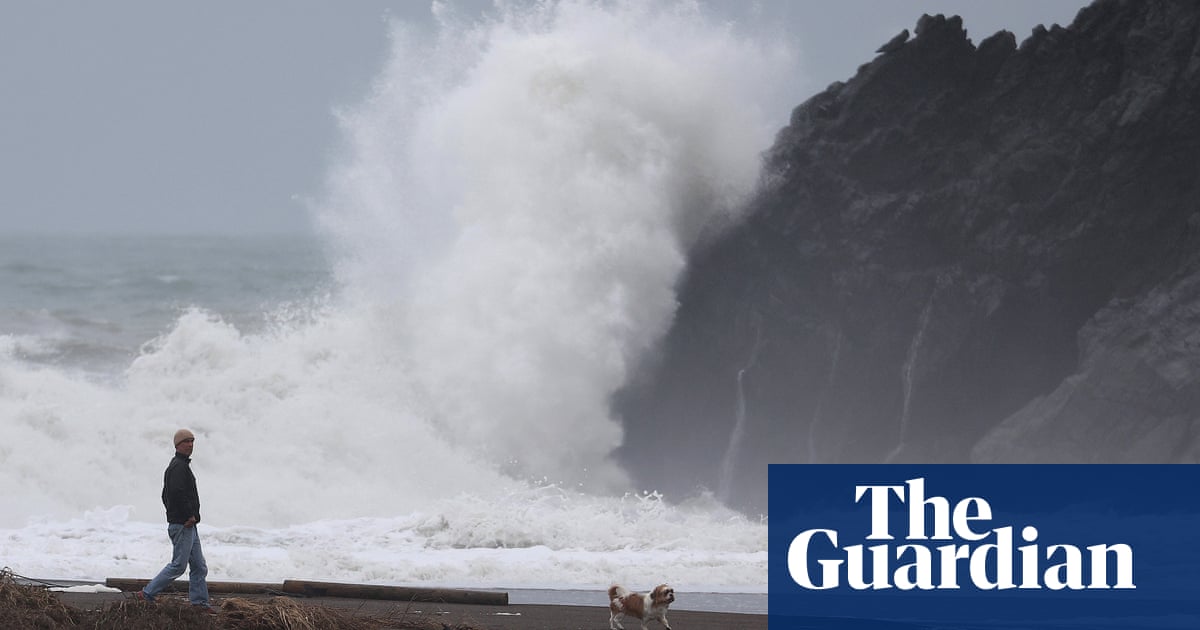Research into release of ‘forever chemicals’ raises concerns about contamination and human exposure along world’s coastlines
Ocean waves crashing on the world’s shores emit more PFAS into the air than the world’s industrial polluters, new research has found, raising concerns about environmental contamination and human exposure along coastlines.
The study measured levels of PFAS released from the bubbles that burst when waves crash, spraying aerosols into the air. It found sea spray levels were hundreds of thousands times higher than levels in the water.
The contaminated spray likely affects groundwater, surface water, vegetation, and agricultural products near coastlines that are far from industrial sources of PFAS, said Ian Cousins, a Stockholm University researcher and the study’s lead author.
“There is evidence that the ocean can be an important source [of PFAS air emissions],” Cousins said. “It is definitely impacting the coastline.”
Extremely misleading title. Sea water alone cannot emmit PFAS. The ocean is already contaminated with PFAS, put their by corporations, and the spray from crashing waves helps spread the contamination .
Not just the title. The slant is evident in the opening paragraph too.
Ocean waves crashing on the world’s shores emit more PFAS into the air than the world’s industrial polluters
Compare to the study title and opening sentences.
Constraining global transport of perfluoroalkyl acids on sea spray aerosol using field measurements
Perfluoroalkyl acids (PFAAs) are highly persistent anthropogenic pollutants that have been detected in the global oceans. Our previous laboratory studies demonstrated that PFAAs in seawater are remobilized to the air in sea spray aerosols (SSAs).
That was my first thought. The fucking spray is not creating the chemicals. We created them and they ended up in the ocean.
It’s weird because it seems like the author primarily reports on PFAS so you would think he’d know better.
I didn’t think it was misleading, but when I read it I automatically thought the article was talking about the extent of pollution in the ocean, not what everyone else seems to be interpreting it as…
Oh…
puts down gun
So the War on Ocean isn’t on?
I must be the only one in the thread who knew that by reading the title.
Correction : Oceans do not emit PFAS. What they do is transport and concentrate them.
No, I’m sorry, that’s not the conclusion the industry paid for, now your kneecaps are forfeit.
Jokes on you my knees are now plastic and deform instead of break. Human 2.0 is gonna be 60% water and 60% plastics…
The PFAS is coming from inside the house!
The slant is coming from the guardian here.
The paper talks about how it’s transported and re-emitted back into the atmosphere. Because it sticks to the surface of the water, the rate is alarming.
Title should be “A handful of greedy humans have been so shitty for so long that they’ve made the world’s oceans toxic”.
It’s way more than a handful.
I really disagree with the narrative of “we all did this” - I consider it corporate reputation-saving propaganda. I refuse to take responsibility for choices I never had a say in (before I was born or when I was young), often no knowledge of, and opposed when I learned of them. It’s even worse for modern kids.
The truth is a small # of companies are responsible for most of the world’s pollution problems - for instance 100 companies produce 71% of global emissions. Just 20 companies are responsible for over half of single-use plastic. Here’s a 2023 article from Boston University about deliberate corporate climate lies and their scientists’ attempts to combat it online. A small # of political and business leaders made the choices that allowed all of this, they often kept attention off it, and often did it over the objections of their citizens.
It may be argued that executives and politicians across so many countries = more than a handful, but it’s a tiny # compared to all the people dealing with the results of decisions they had no influence over. Handful can be used as shorthand for “a small quantity or number”. I’m not saying you are making that argument, just heading it off preemptively.
The companies absolutely knew about the danger without telling anyone else.
It’s like the radium girls. Or agent Orange. Or asbestos. Or lead. Or CFCs. Or PCBs.
I may read that, some day,
but it’s a blunt fact that PFAS cannot be produced/manufactured by spraying ocean-water into the air.
Those chemicals are coming from our industry, they are not coming from the ocean.
Aerosoling them by the ocean is only possible if they’re being manufactured, then being put into the ocean, who can then aerosol them.
“Emitting” means producing, in most people’s minds: emitting means they weren’t present, before being emitted.
The kind of reckless incompetence of the headline this was given, is what boosts/empowers climate-denialism.
Propaganda isn’t journalism, no matter how many clicks it gains.
bitterness
I can’t find a better way to describe it.
A lot of factories don’t emit chemicals into the air.
If you stood next to a factory there’s a high chance you won’t be exposed to anything nasty. Or, a lot less than the ocean spray apparently.
Oh, it’s the ocean that’s the problem! And here I thought it was all the corporations creating and using PFAS.
This is the best summary I could come up with:
The study measured levels of PFAS released from the bubbles that burst when waves crash, spraying aerosols into the air.
The contaminated spray likely affects groundwater, surface water, vegetation, and agricultural products near coastlines that are far from industrial sources of PFAS, said Ian Cousins, a Stockholm University researcher and the study’s lead author.
They are dubbed “forever chemicals” because they do not naturally break down and are highly mobile once in the environment, so they continuously move through the ground, water and air.
The new research looked at levels in the sea spray as waves crash by testing ocean samples between Southampton in the UK and Chile.
Previous non-peer-reviewed research has found a correlation between higher PFAS levels in vegetation samples and proximity to the ocean, Cousin said, and his team is undertaking a similar study.
He said that the results show how the chemicals are powerful surfactants that concentrate on the surface of water, which helps explain why they move from the ocean to the air and atmosphere.
The original article contains 445 words, the summary contains 170 words. Saved 62%. I’m a bot and I’m open source!
I guess we all need to cut back on cranberries. /s







